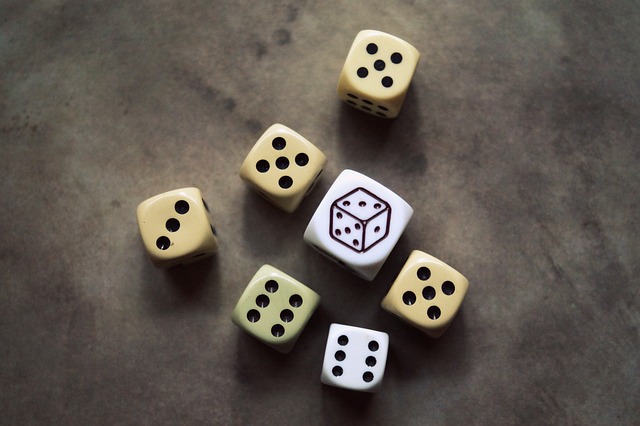The rain pours down immediately after you’ve waxed your car. A firehouse burns down to the ground. Strangers in a bar chat about waiting for their blind date to turn up without realizing it’s each other.
Situational irony is all around us – and it takes place when the exact opposite of what we expect happens. And as a literary device and technique, situational irony goes beyond the literal meaning of the words we choose.
This article gives a workable situational irony definition and shows you how to use it to boost the depth of your metaphors in your creative writing. We’ll also look at other types of irony, including historical, dramatic, structural, poetic, verbal, and cosmic irony.
Situational irony definition
Situational irony is a situation or occurrence where the outcome or intended meaning of a situation is drastically different than what would be expected to happen or considered normal. It often involves incongruity between what is expected to happen and what actually occurs, leaving those involved surprised, confused, and sometimes even amused.
What is situational vs. dramatic irony?
Another type of irony that can often be confused with situation irony is dramatic irony, which involves one or more characters in a situation being unaware of what the other characters know.
For example, in a play, the protagonist may be unaware that they’re speaking to their future spouse, who is disguised as someone else. This situation presents an incongruity between appearance versus reality.
Overall, situational and dramatic irony can be seen as two different yet equally powerful devices used to create a sense of surprise, confusion, and amusement in literature. Understanding the distinction between situational irony and dramatic irony can help writers develop engaging stories for their audience.
Why is situational irony used in creative writing?
Situational irony is a literary technique used for various purposes in literature, film, television shows, and other forms of storytelling.
It can serve to:
- Create unexpected twists: By presenting a situation where the outcome is the opposite of what the reader expected, situational irony adds an element of surprise and keeps the audience engaged and entertained.
- Evoke emotional responses: Situational irony can provoke strong emotional reactions, such as shock, amusement, or sympathy, which helps the audience connect with the characters and the story on a deeper level.
- Highlight themes and messages: By contrasting expectations with reality, situational irony can emphasize key themes or messages the author wants to convey, making them more memorable and impactful.
- Add humor: Situational irony often results in comedic situations, making the audience laugh and lightening the mood of a story.
- Encourage critical thinking: When the audience encounters situational irony, they are prompted to reflect on the reasons behind the unexpected outcome, fostering a deeper understanding of the story and its complexities.
Some examples of situational irony in movies
Spoiler alerts! Some examples of film-related situational irony.
The Sixth Sense (1999)
The film’s main character, Dr. Malcolm Crowe (played by Bruce Willis), is a child psychologist helping a young boy who can see and communicate with the dead. The situational irony occurs when it is revealed that Dr. Crowe himself is a ghost and has been dead for the entire duration of the film. This twist contrasts with the audience’s expectation that Dr. Crowe is alive and helping the boy.
Titanic (1997)
The ship Titanic was considered “unsinkable,” which created a sense of security for the passengers and crew. However, situational irony occurs when the ship strikes an iceberg and eventually sinks, resulting in the tragic loss of many lives. The unexpected disaster contradicts the initial belief in the ship’s safety.
The Dark Knight (2008)
In one of the film’s most pivotal scenes, the Joker (played by Heath Ledger) sets up a moral dilemma for Batman (played by Christian Bale) and the citizens of Gotham City. Two ferries are rigged with explosives, and the Joker gives each group of passengers the power to detonate the other ferry’s explosives. The situational irony lies in the fact that both groups of passengers refuse to kill the other, defying the Joker’s expectation that they would act selfishly to save themselves. This outcome highlights the resilience of humanity in the face of chaos and terror.
Examples of situational irony in literature
Some examples of situational irony in literature:
Situational irony in Romeo and Juliet by William Shakespeare
You could argue that the most striking use of situational irony comes in the play’s climax, where William Shakespeare’s Romeo sees Juliet drugged, believing that she’s dead rather than asleep.
This leads to Romeo ending his own life – only for Juliet to awaken, finding him dead beside her, leading her to end her life as well.
This is the opposite of what we expect to happen, with the two lovers lacking their expected “happily ever after.”
Situational irony in The Gift of the Magi by O. Henry
This short story follows a young couple, Della and Jim, who both sacrifice their most prized possessions to acquire Christmas gifts for each other.
The situational irony emerges when Della cuts and sells her long hair to buy Jim a chain for his pocket watch, but unbeknownst to her, Jim has sold his watch to buy her a set of combs for her hair.
The story highlights the depth of their love and the irony of their gifts.
Situational irony in Animal Farm by George Orwell
This allegorical novel is the story of a team of farm animals who overthrow their human owner and create a society where all animals are equal.
However, the situational irony lies in the fact that the pigs, who lead the revolution and promise equality, eventually become corrupt and oppressive rulers, mirroring the humans they overthrew.
Some everyday examples of situational irony
Here are some everyday examples of situational irony:
- A fire station burning down: It’s ironic that a place meant to put out fires ends up burning down – an example of situational irony because it’s unexpected and goes against the typical function of a fire station.
- A traffic jam on the way to a protest against traffic congestion: If people are protesting against traffic congestion and they get stuck in a jam on their way to the rally, it’s an example of situational irony because the very thing they’re protesting against is preventing them from getting there.
- A doctor who smokes: It’s ironic that someone who is supposed to promote good health and help others avoid sickness engages in a behavior known to cause health problems. This is an example of situational irony because it goes against expectations and seems contradictory.
What is structural irony?
How structural irony occurs in The Great Gatsby
You can find an example of structural irony in F. Scott Fitzgerald’s “The Great Gatsby.” The novel structure follows a series of parties thrown by the wealthy Jay Gatsby, hoping to win back his former love, Daisy.
While the parties are lavish and glamorous, but ultimately revealed to be hollow and empty, as Gatsby’s attempts to win over Daisy fail.
The contrast between the opulence of the parties and the emptiness of Gatsby’s life creates a sense of structural irony that underscores the novel’s themes of disillusionment and the corruption of the American Dream.
Other types of irony
- Verbal irony – a figure of speech in which a speaker says something but means the opposite, often used to create a humorous or sarcastic effect.
- Historical irony – where the outcome of historical events is different from what was intended, such as the sinking of the Titanic or in the story of Napoleon Bonaparte – a military genius who conquered much of Europe and established himself as one of the most powerful men in history. However, his ambition ultimately led to his downfall, as he was exiled to the island of Saint Helena and died there in 1821. The irony here is that Napoleon’s rise to power was fueled by his desire for glory and conquest, but his ultimate fate was obscurity and defeat.
- Poetic irony – where the intended meaning of a word or phrase is different from the literal or usual meaning. For example, in John Keats’ poem “Ode to a Nightingale,” the speaker says, “Thou wast not born for death, immortal Bird!” This is an example of poetic irony because, despite the speaker’s assertion that the nightingale is immortal, the bird will eventually die like all living creatures.
- Cosmic irony – often associated with the absurd or the inexplicable, as if the universe itself is conspiring against the character. For example, in Sophocles’ play “Oedipus Rex,” the titular character tries to avoid his fate of killing his father and marrying his mother, only to unwittingly fulfill the prophecy through his own actions.
What is situational irony?
In conclusion, situational irony is a powerful literary device that can add depth, complexity, and humor to any piece of writing. By creating a gap between what is expected and what actually occurs, situational irony can challenge our assumptions, highlight the absurdities of life, and reveal the unexpected connections between seemingly disparate elements.
Whether used in literature, film, or everyday conversation, situational irony has the power to captivate our imaginations and provide us with new ways of better understanding the world around us. So the next time you encounter a surprising twist of fate, take a moment to appreciate the beauty and complexity of situational irony at work.
Harry Wallett is the Founder and Managing Director of Relay Publishing. Combining his entrepreneurial background with a love of great stories, Harry founded Relay in 2013 as a fresh way to create books and for writers to earn a living from their work. Since then, Relay has sold 3+ million copies and worked with 100s of writers on bestselling titles such as Defending Innocence, The Alveria Dragon Akademy Series and Rancher’s Family Christmas. Harry oversees the creative direction of the company, and works to develop a supportive collaborative environment for the Relay team to thrive within in order to fulfill our mission to create unputdownable books.
Relay Publishing Wants You
If you think you have what it takes to become a brilliant writer, editor, or storyliner, Relay Publishing has a range of exciting opportunities.
Find out more about us, and get in touch. We can’t wait to hear from you!



